Rodin's Hands
Iakov Levi
Hands. From Rodin’s Sublimation of an Instinctual Need to Hitler’s Perversion
Many
noticed Rodin’s tormented way of representing hands in his sculptures.
Some
commented:
Freud has analyzed a short story by Stefan Zweig:
“Four – and - Twenty Hours in a Woman’s Life”. Freud writes:
Rodin’s art therefore represents the sublimation
of the instinctual need of masturbation.
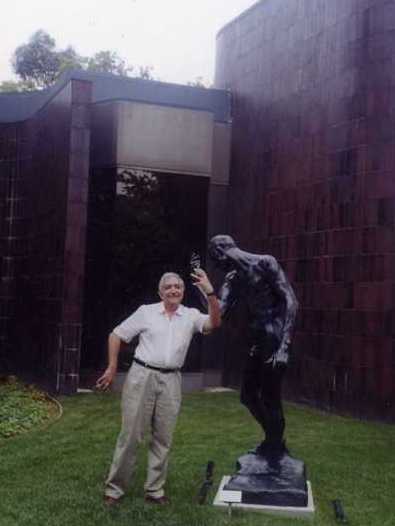
Hitler’s
Hands
After
puberty, masturbation represents a regression. The libido inhibited
from the
heterosexual object regresses to the need to masturbate. However, whilst
in
Rodin’s work the energies activated in the process were sublimated and
resulted
in masterpieces of art, if the regression is acted out we speak of
perversion.
At
difference from Mussolini, who in his speeches usually held his hands on
his
belt in a macho attitude of defiance, Hitler literally spoke with his
hands,
through which he “made love” to himself.
Hitler, the
vicar of the Brotherhood Horde of the pubescent rebellious crowd
[2] ,
never made
it to the
other side of the puberty rite: the identification with the generation
of the
Fathers and the gratification of sexual licence.
Erikson pointed at the role that Hitler fulfilled as vicar of the group:
On the stage of German history, Hitler sensed to what extent it was safe to let his own personality represent with hysterical abandon what was alive in every German listener and reader. Thus the role he chose reveals as much about his audience as about himself; and precisely that which to the non - German looked queerest and most morbid became the brown Piper's most persuasive tune for German ears
[3]
Hence the
hysterical tones which sent the crowd in such an ecstasy. He gave
expression to
the collective frustration of a horde of novices which could not
complete their
puberty rite and be granted sexual licence. They were mentally self-hindered from the heterosexual level of the libidinal organisation, and therefore retrenched into masturbation. The reason is that the Nazi
horde
rejected every compromise with the Fathers’ generation. They subverted
every
Law and Legitimacy, and went out to act an orgy of instinctual
satisfaction
with no Super Ego presence and inhibition. Hitler masturbated in public
and the
public identified with him. He gave full expression
to the most repressed needs of his followers who saw in him their most
truthful representative.
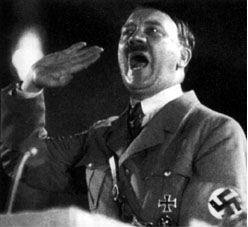
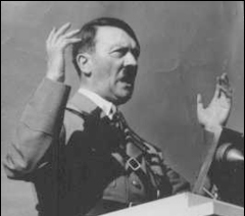
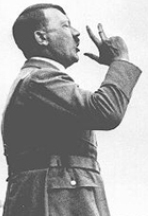
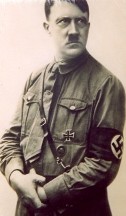
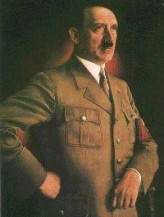
He did't know what to do with his hands. Or did he?
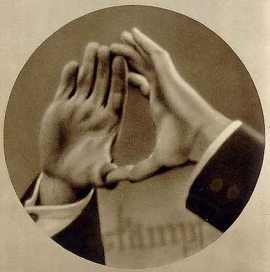
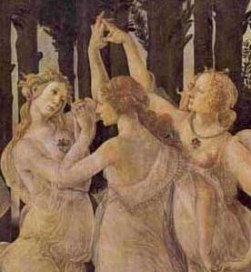
Hitler's hands and
Botticelli's Primavera
Hitler unconsciously making the symbol of the vagina.
(The picture captures Hitler's hands as he speaks of the unity of the National Socialist and socialist ideas).
The same vagina's symbol as in Botticelli's Primavera
In Hamlet. The Puberty Rite of a Danish Prince and His Companions I have discussed the feminine aspect of pubertal boys, who have not yet passed succesfully their puberty rite into the "other" side of the identification with the Fathers' generation.
Gerard David: Christus am Creuz, 1515
(Gemalde Galerie - Berlin)
NOTES
[1] Sigmund Freud,
“Dostoevsky and Parricide”, in The
Standard Edition of the Complete Psychological Works of Sigmund
Freud,
Vintage -The Hogart Press,
[2]
For Hitler as Imago of the Son, vicar of the Brotherhood of adolescent youths (and not as image of the Father), see Erik H. Erikson, "The Legend of Hitler's Youth", in Childhood and Society, 1950, Penguin Books Australia Ltd, Ringwood, Victoria -Australia and Harmondsworth, Middlesex, England 1965, (Chapter 9).
Erikson writes:
[3]
Op.cit. p.321.
Psychologists overdo the father - attributes in Hitler's historical image; Hitler the adolescent who refused to become a father by any connotation, or, for that matter, a Kaiser or a President. He did not repeat Napoleon's error. He was the Fuhrer: a glorified older brother, who took over prerogatives of the father, without over identifying with them: calling his father " old while still a child", he reserved for himself the new position of the one who remains young in possession of supreme power. He was the unbroken adolescent who had chosen a career apart from civilian hapiness, mercantile tranquility, and spiritual peace: a gang leader who kept the boys together by demanding their admiration, by creating terror, and by shrewdly involving them in crimes from which there was no way back. And he was a ruthless exploiter of parental failures (pp.327-8)
Erikson emphasizes the character of German society as similar to that of a pubertal gang, of which shares the main psychological traits:
As "Wanderbirds", adolescent boys would indulge in a romantic unity with Nature, shared with many co - rebels and led by special types of youth leaders, professional and confessional adolescents. Another type of adolescent, the "lone genius", would write diaries, poems and treaties; at fifteen he would lament with Don Carlos's most German of all adolescent complaints: "Twenty years old, and as yet nothing done for immortality!" Other adolescents would form small bands of intellectual cynics, of delinquents, of homosexual, and of race -conscious chauvinists, The common feature of all these activities, however was the exclusion of the individual fathers as an influence and the adherence to some mystic -romantic entity: Nature, Fatherland, Art, Existence, etc., which were super - images of a pure mother, one who would not betray the rebellious boy to that ogre, the father.
(p.325)
Links:
Who Burns the Books?
Hamlet. The Puberty Rite of a Danish Prince and His Companions
Pinocchio. The Puberty Rite of a Puppet